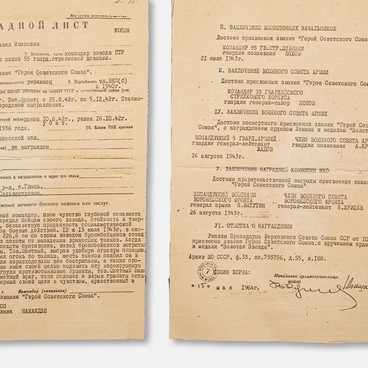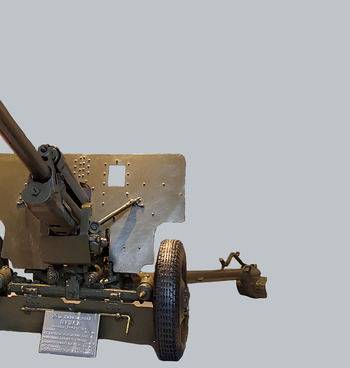This mannequin is dressed in the uniform of a Soviet lieutenant-tanker that was used in the Battle of Kursk. However, by 1943, even within one military unit or division, tank crewmen were provided with different uniforms.
The first jumpsuits were blue or dark blue. They were called “overalls of mechanics-drivers”. The crew wore the usual field uniform under the jumpsuit. It was intended simply to protect the mechanic’s uniform from dust and dirt when repairing equipment.
The jumpsuit had flaps — special overlays on buttons and pockets, long straps on the sleeves and at the bottom of the trousers, which were used to tighten clothes, and rhomboid knee pads. The jumpsuit had only two pockets: on the left side of the chest and on the right hip. Subsequently, almost no changes were made to the design, but the jumpsuit was dyed black.
Tank headsets (communication helmets) were developed in the mid-1930s. They were made of strong and dense black cloth or thin black leather. The helmet had a lining made of a cotton fabric, special rollers stuffed with horsehair, felt, cloth or wadding, and at the ear level — pockets with flaps into which headphones could be inserted. Summer and winter versions were made, and the latter had a fur lining inside.
To protect the eyes while on the road, crewmen relied on special safety glasses. Their designs were very different. The most common type is presented on the mannequin. Glasses were provided to all crewmembers of tanks and transport vehicles without exception, as well as to car drivers and their assistants.
A map bag, or map case, was intended for carrying and convenient use of topographic maps. It was provided as part of a field bag and kept inside it or carried on its own. The bag was originally made of leather, but in 1941 some bags were sewn from dark green kirza. For convenience, the internal partition was made of transparent celluloid, which protected the maps from rain and scratches.
The main personal weapon of the tank commander and driver was the Nagant M1895 Revolver with minor changes that were made to the design in the 1920s and 1930s. In the turrets of the tanks there were special firing ports (holes) that could be closed from the inside. Through them, the crew could shoot back at the enemy. However, the standard issue Soviet TT pistol was poorly suited for these purposes: its barrel could not fit inside the holes. Crewmen carried the revolver in a holster on their right side.


